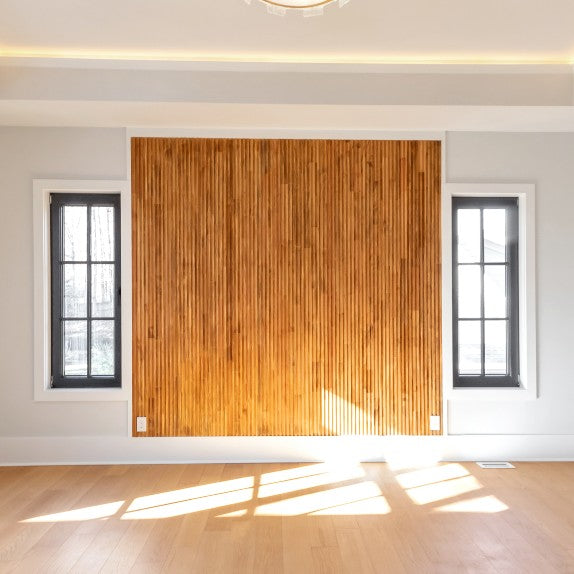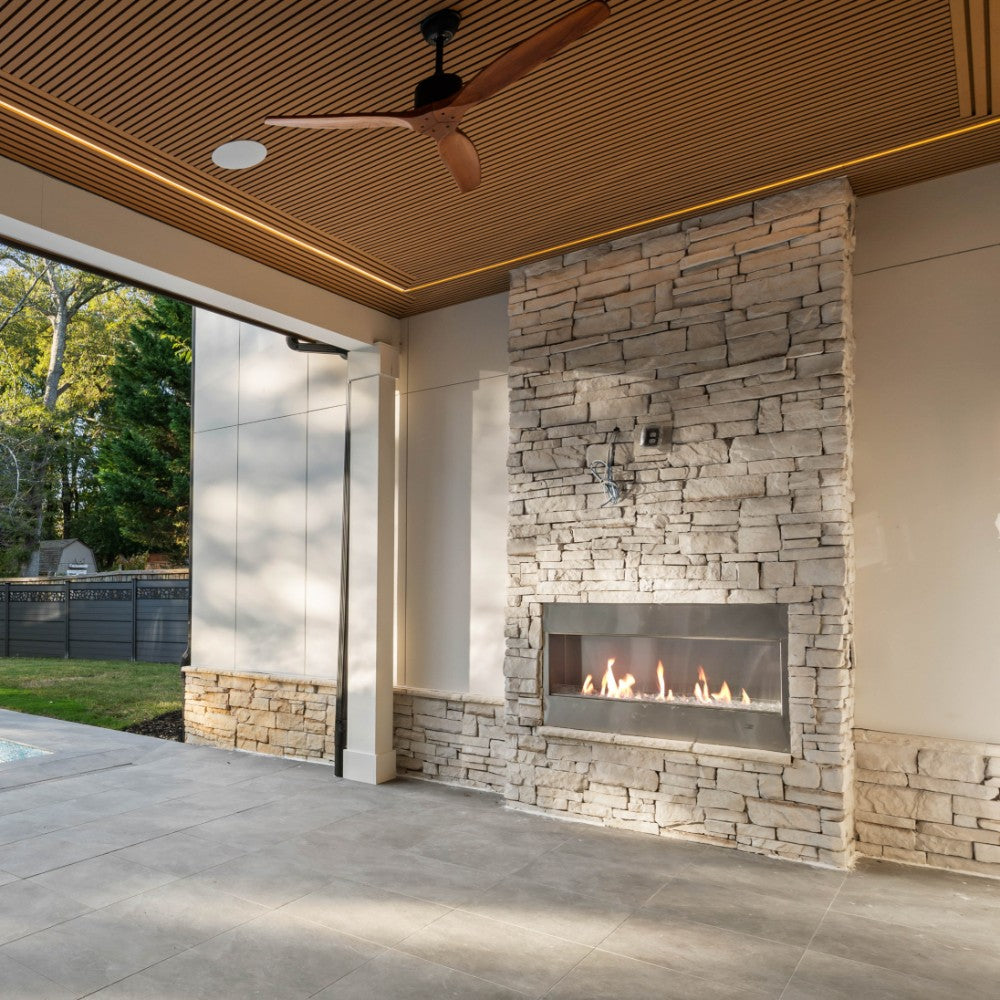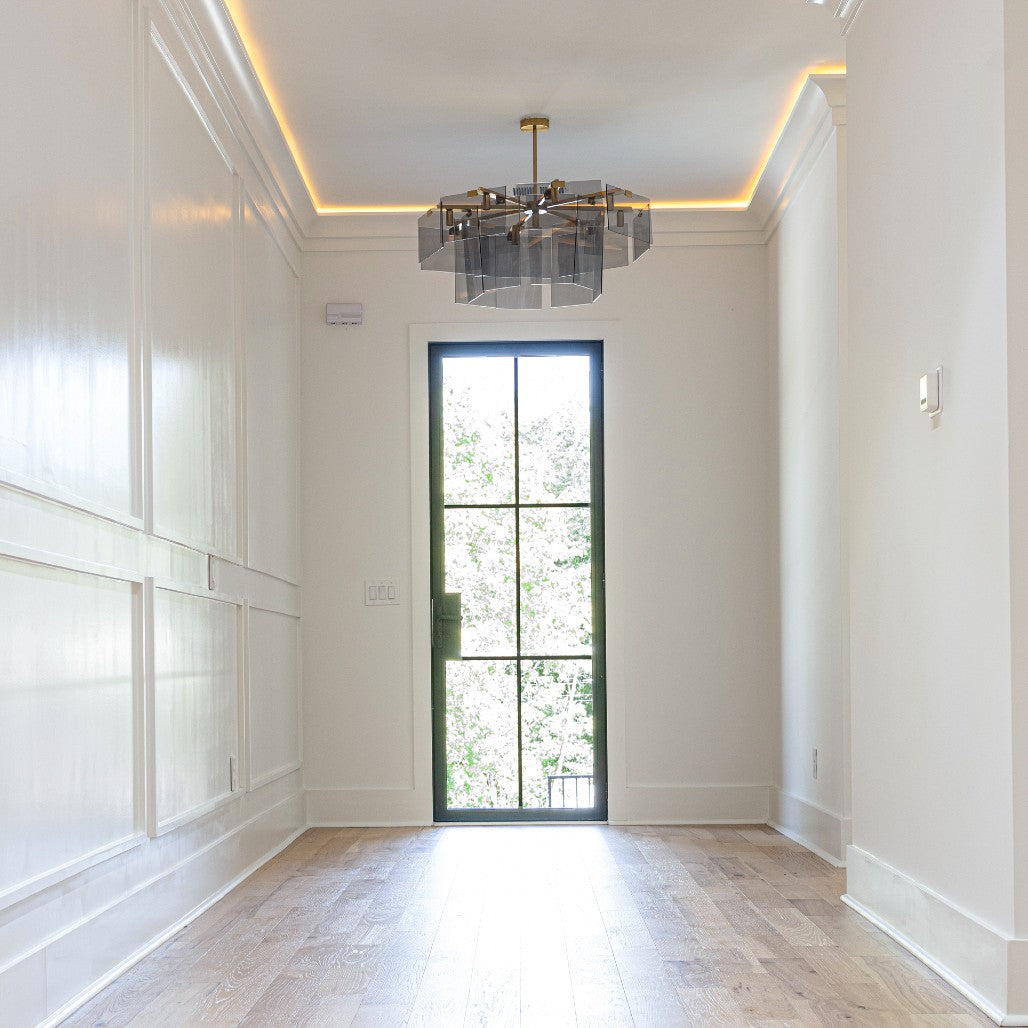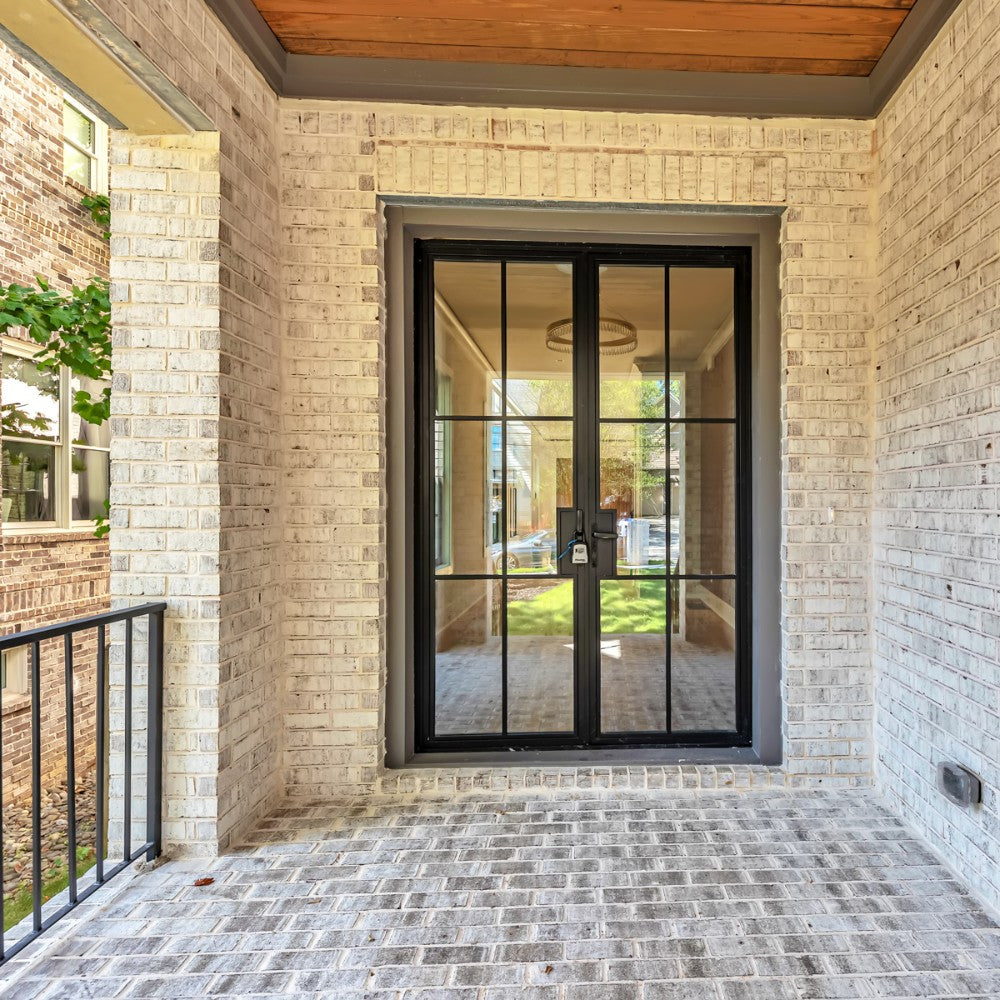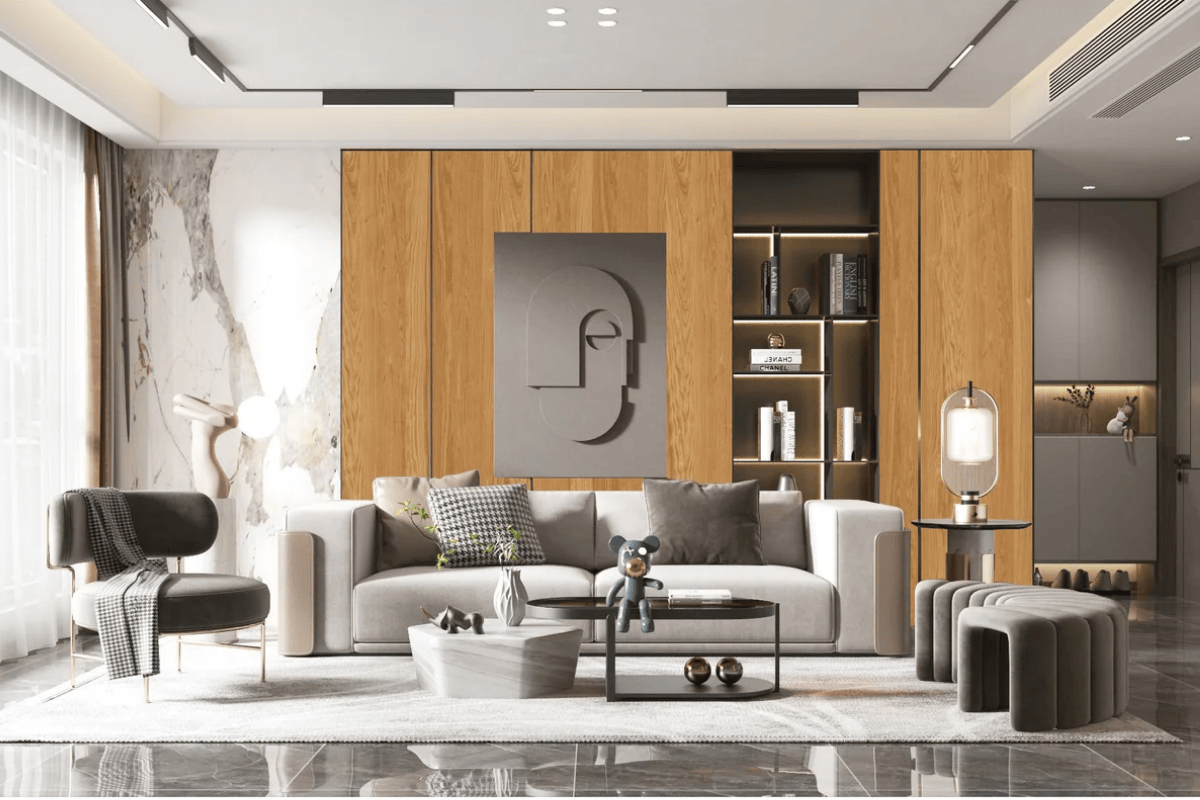
Eco-Chic Wall Paneling: How Sustainable Materials Are Shaping 2025 Home Design
Wall paneling is having a defining moment in 2025. No longer just a simple wall covering, it has evolved into a design feature that adds texture, warmth, and personality to any space while reflecting a genuine commitment to sustainability. This year, eco-friendly materials are leading the way, blending style, durability, and a reduced environmental footprint.
For interior designers, real estate professionals, and home enthusiasts alike, understanding these trends is essential to creating spaces that look great, feel inviting, and make sense for today’s conscious living.

The New Wave of Sustainable Wall Panels
The materials shaping wall paneling in 2025 combine innovation with environmental responsibility. Here are the key players:
-
Wood Plastic Composite (WPC): A blend of wood fibers and recycled plastics, WPC offers the warmth of wood with enhanced resistance to moisture and wear. This makes it ideal for kitchens, bathrooms, and other areas where durability is a must.

-
Medium Density Fiberboard (MDF): Crafted from recycled wood fibers, MDF panels provide a smooth canvas perfect for painting or intricate designs. Their versatility allows for everything from minimalist wainscoting to bold 3D patterns.
-
PVC Panels: Lightweight, water-resistant, and low maintenance, PVC panels are perfect for humid or high-traffic areas. Many options incorporate recycled content, aligning with eco-conscious values.
-
Solid Wood: The timeless classic remains a favorite, especially when responsibly sourced. Its unique grains and textures add warmth and character, making each installation one-of-a-kind.

These materials represent a shift toward reducing environmental impact without compromising on style or function.
Why Choose Eco-Friendly Wall Paneling?
Sustainability is more than a buzzword—it’s a lifestyle choice that influences material selection and design decisions. Eco-friendly wall panels offer benefits beyond their visual appeal:
-
Energy Efficiency: Many panels provide thermal insulation, helping to keep homes warmer in winter and cooler in summer, which reduces energy consumption.
-
Acoustic Comfort: Textured panels absorb sound, creating quieter, more peaceful interiors.
-
Durability: Materials like WPC and PVC resist moisture and scratches, ensuring lasting beauty with minimal upkeep.
-
Healthier Indoor Air: Low-emission panels contribute to better air quality, an important factor for families and workplaces.
-
Design Flexibility: From rustic reclaimed wood looks to sleek painted MDF or textured PVC, sustainable panels suit a wide range of aesthetics.

2025 Wall Paneling Trends to Watch
Several exciting trends are shaping how wall panels are used this year:
1. Natural Textures and Warm Tones
Organic materials like woodgrain, stone, and cork bring tactile richness and a calming presence. Warm beiges, soft greens, and light oak finishes create inviting, nature-inspired spaces.

2. 3D and Geometric Patterns
Panels with sculptural reliefs or geometric shapes add depth and visual interest, transforming walls into focal points without overwhelming the room.

3. Mixed Materials
Combining wood with metal accents or matte finishes adds contrast and sophistication. For example, slatted wood panels paired with subtle metallic trims create modern elegance.
4. Statement Walls
Feature walls using bold colors or patterned panels anchor living rooms, home offices, or entryways, expressing personality and style.

5. Visible Sustainability
Materials that tell a story—such as reclaimed wood or certified eco-friendly composites—are increasingly valued by homeowners who want to know the origins and impact of their choices.
Practical Ways to Incorporate Eco-Chic Wall Panels
If you’re considering wall panels for your next project, here are some ideas that combine style, function, and sustainability:
-
Accent Walls: Use WPC or solid wood panels behind sofas or beds to add warmth and texture without overpowering the space.
-
Wet Areas: PVC and moisture-resistant WPC panels are perfect for bathrooms, kitchens, and laundry rooms, offering both style and practicality.

-
Ceiling Treatments: Extending paneling to ceilings with wood or textured MDF adds architectural interest and improves acoustics.
-
Creative Headboards: Panels behind the bed create a cozy, sophisticated focal point that elevates bedroom design.

-
High-Traffic Zones: Durable, easy-to-clean panels work well in entryways and hallways, balancing beauty with resilience.
How Wall Paneling Connects with Other Home Elements
Wall paneling doesn’t exist in isolation—it complements other key design elements that are also evolving with sustainability and style in mind:
-
Doors: Engineered wood and composite doors with natural finishes provide durability and eco-conscious appeal, while glass-panel options add light and openness.
-
Lighting: Warm, adjustable LED lighting paired with fixtures made from recycled metals or sustainable materials enhances the textures and tones of wall panels, creating inviting atmospheres.
-
Plumbing Fixtures: Matte black or brushed brass faucets with water-saving technology blend modern elegance with environmental responsibility, perfectly complementing natural or textured wall surfaces.
-
Flooring: Engineered hardwood, bamboo, cork, and luxury vinyl planks made with recycled content provide durable, stylish foundations that coordinate beautifully with eco-friendly wall panels.
Together, these elements create a cohesive, sustainable home environment that balances aesthetics and function.
Sustainability and Style: A Lasting Partnership
Choosing eco-friendly wall panels is a way to design with meaning. It’s about more than just trends—it’s a conscious decision to reduce environmental impact while enhancing home comfort and beauty.
When selecting materials, consider their entire lifecycle: sourcing, manufacturing, installation, and maintenance. Panels that are easy to install and maintain reduce waste and resource use over time, making them smart investments for both homes and businesses.
Beyond Walls: The Emotional Impact of Sustainable Design
Sustainability in home design goes beyond materials—it influences how we feel in our spaces. Natural textures and warm tones create calming environments that reduce stress and foster wellbeing. The tactile quality of wood or textured panels invites touch and connection, making rooms feel lived-in and loved.
Incorporating sustainable wall panels also sends a message. It reflects values of care, responsibility, and forward-thinking. For sellers and real estate agents, homes with these thoughtful details often stand out in the market, appealing to buyers who prioritize eco-conscious living.

Designing with the Full Lifecycle in Mind: From Source to Home
When choosing wall paneling, it’s important to think beyond the immediate visual impact. The true value of sustainable materials comes from considering their entire lifecycle—from sourcing and manufacturing to installation, maintenance, and eventual disposal or recycling.
Sourcing: Opt for panels made from responsibly harvested wood or recycled content. Certifications like FSC (Forest Stewardship Council) or similar labels ensure that the raw materials come from well-managed forests or reclaimed sources, helping preserve biodiversity and reduce deforestation.
Manufacturing: Look for products manufactured with low emissions and minimal waste. Advances in production technology have made it possible to create high-quality panels with less environmental impact, including reduced water and energy consumption.
Installation: Eco-friendly panels often feature easy-to-install designs that reduce construction waste and labor time. Some systems allow for dry installation, which minimizes the use of adhesives or chemicals and simplifies future repairs or replacements.
Maintenance and Longevity: Durable materials that resist moisture, scratches, and fading extend the life of your walls, reducing the need for frequent replacements. Choosing panels that are easy to clean with natural products also supports healthier indoor environments.
End of Life: Finally, consider what happens when the panels reach the end of their useful life. Materials that can be recycled or safely biodegrade help close the sustainability loop, reducing landfill waste.
Bringing It All Together: A Thoughtful Choice for 2025 and Beyond
Incorporating eco-chic wall paneling into your home is more than a design decision—it’s part of a larger commitment to living thoughtfully and sustainably. By selecting materials that respect the planet and enhance your space, you create interiors that are not only beautiful but also meaningful.
For professionals in interior design and real estate, understanding and communicating these benefits can add value to your projects and listings. For homeowners, it’s an opportunity to invest in a healthier, more comfortable living environment that reflects personal values.
As 2025 unfolds, wall paneling stands out as a versatile, stylish, and responsible choice—one that invites texture, warmth, and story into every room.


